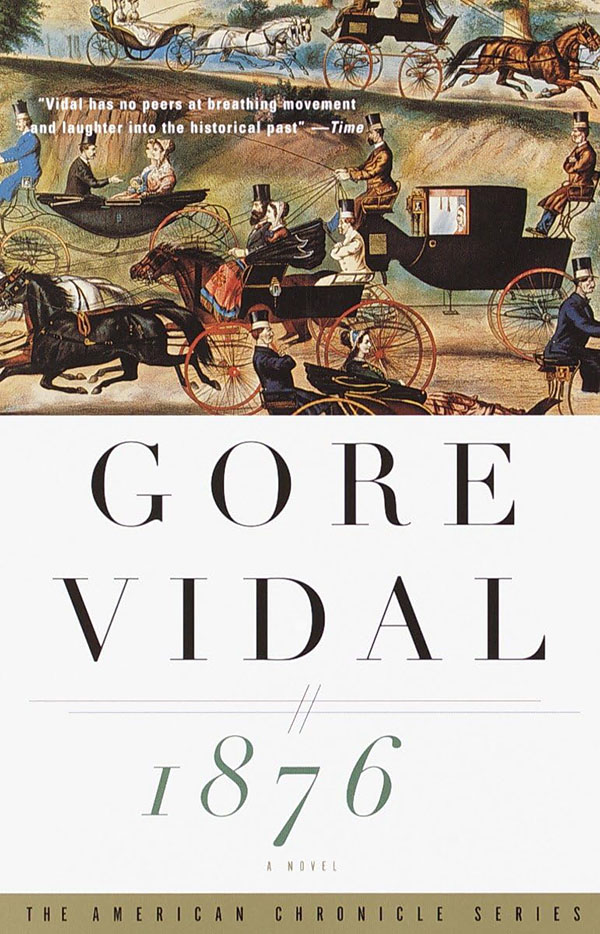
Review of 1876
Vidal, Gore.1876.Knopf Doubleday PG. 1st Vintage Int’l Edition February 2000. 384 pages. $19.00 paperback. ISBN-13 978-0375708725.
Amongst the pantheon of American authors exist few—if any others—who could write as critical and yet with equal veneration about the history of the American experiment as Gore Vidal (1925–2012). In telling our tale, Vidal published seven historical nonfiction novels collectively called the Narratives of Empire. Book three in the series by publication date and chronology,1876(1976), tells the tale of Charles Schermerhorn Schuyler as he returns to America after spending the previous thirty-eight years as the American Vice Consul at Antwerp. Charles Schuyler returns home with hopes of regaining his wealth and securing his daughter's future in a New York City that is much changed.
Charles Schuyler’s efforts to stay financially afloat leads him to write for the New York Herald under the historical figure of William Cullen Bryant. Through this, Gore Vidal takes us on a tour of the country’s political and social circles on the eve of the country’s centennial celebration and the election for the nineteenth president of the United States. Both through the experiences he and his daughter, Emma, the Princess d’Agrigente, share as they are introduced into New York high society, where notable figures such as Ward McAllister and Caroline Astor are offered in snapshots through the Gilded Age. Concurrently, Charles Schuyler’s latches his financial hopes to the presidential campaign of New York Governor Samuel Tilden. In an effort to return to Europe under another political appointment, Gore Vidal pulls us through the political machinations of Reconstruction Era American politics. When a dispute over the electoral college in four states causes Tilden to lose the election despite winning the popular vote, Gore Vidal takes the reader through the plan to end Reconstruction and remove Union troops from South Carolina and Louisiana so that the presidency falls to Rutherford B. Hayes. By comparing himself to Washington Irving’s Rip Van Winkle, Charles Schuyler explores how, after being rendered asleep to the change in America, the country of his origin had changed, if any.
It comes as a breath of fresh air to fans of history that a novel memorializes the events that occurred after the American Civil War and before America’s emergence on the global stage after the First World War. Fans of shows like HBO’sThe Gilded Agewill find familiarity in the setting and events depicted in 1876. However, the novel falls short as a narrative as it bounces between the perspective of Charles Schuyler’s private journal and a proper novel. The effect is that there is little plot and conflict but a recounting of individual motivations against the backdrop of historical events. Instead, this novel is best read in the context of Vidal’sBurr andLincoln, which come before in the Narratives of Empire. Then, as a pretext forEmpire, the book after1876 in the series. Read this for the history, not the journey.
Ethan J. Longoria
Midwestern State University